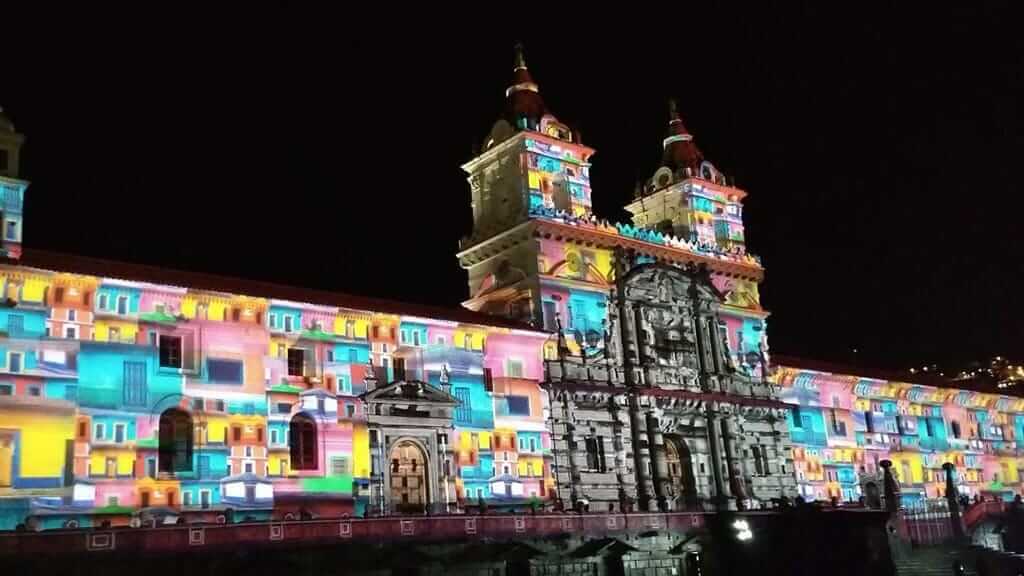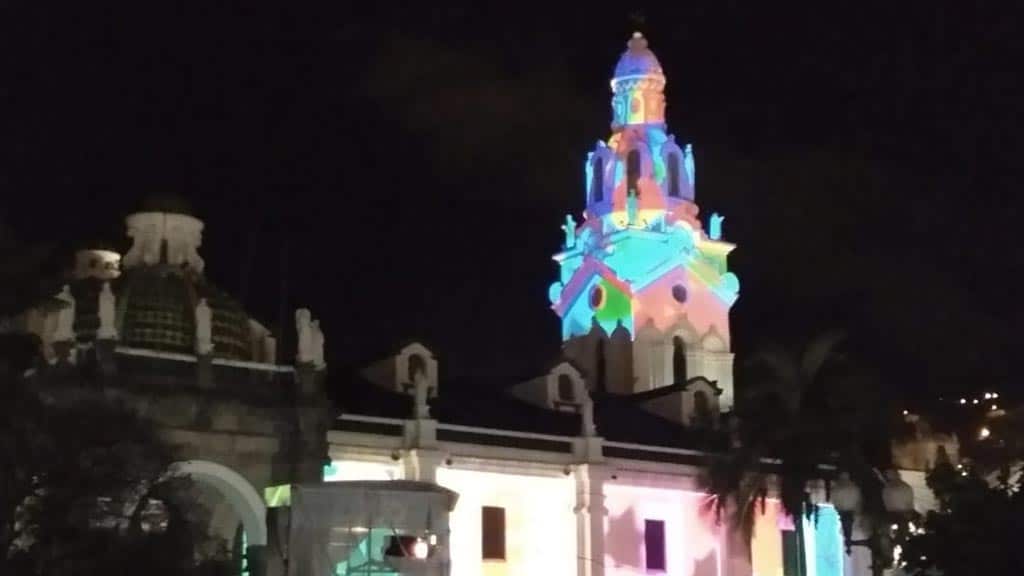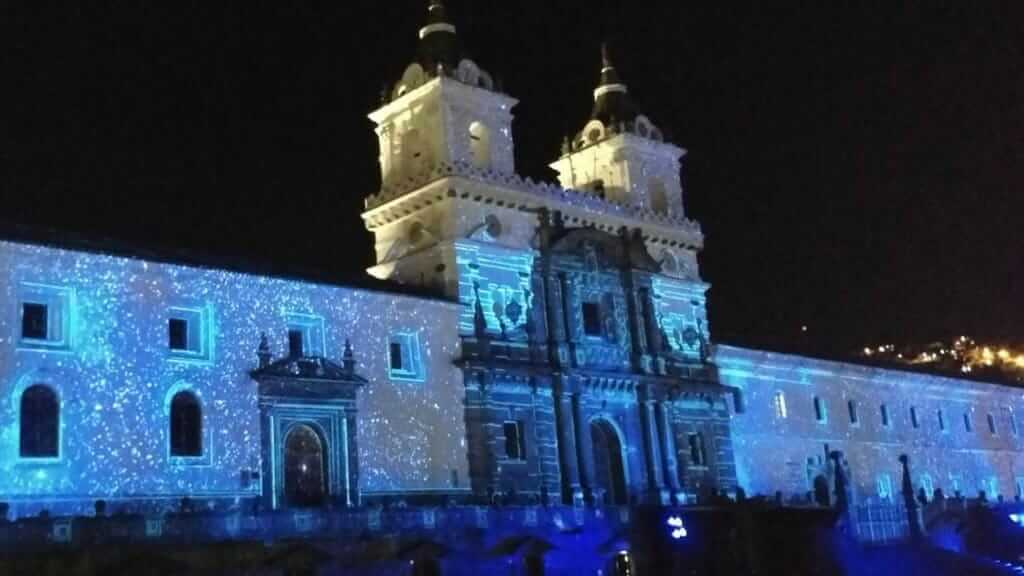While Quito’s detractors are quick to point out the city’s flaws, the capital of Ecuador does many things well-the annual Fiestas de Luz is high on the list. Any given day wandering the streets of the historic center is an adventure into the Spanish architecture, the rich history, and the roots of the country’s culture.
In early August the country celebrates its declaration of independence from the Spanish. After the sun sets the historic center sparks to life with color as visual pieces from international artists use the architecture of the first UNESCO site as backdrops for amazing works of art.
The festival started three years ago with a joint collaboration between the city of Lyons in France, where their annual festival of lights dates back 160 years, and Quito. A French team works with Ecuadorian artists and students, holding workshops that produce choreographed visual pieces that illuminate the night in 18 places including the Basilica, Independence Plaza, and Plaza de San Francisco.
SECURE YOUR ECUADOR TRAVEL
Get a FREE personalised quote todayMillions of people fill the streets, bringing out the best of the city’s spirit-brass bands play in the plazas, and people from all over the country take to the streets. Despite the crowds, there is an awe-struck aspect to the proceedings that brings a sense of community to the night. Families, students, and generations of all ages come together to enjoy the place they call home in spectacular style.
Aztec art, the animals of the Galapagos, and huge images of a fiery sun appear on the white facades of church fronts, umbrellas strewn overhead light up the cobblestone streets below, and normally grey concrete grey buildings are made over with baroque colors and figures. This is the only festival of its kind in South America-just one of the firsts that Quito claims as its own.
The achievement is no small affair. The intricacy of the projections is breathtaking talent and imagination of the artists reach new heights each year. French artists Laurent Langlois and Yves Moreaux with Ecuadorean artists Lenin Moncayo and Miguel Angel Murgueytio contributed to the twelve Ecuadorian projects and the six international exhibits that made up this year’s festival.
French artist Erik Barray participated in the festival and also led a workshop in the weeks prior to the festivities. The new event was a collaboration of interior designers, industrial design students, artists, set designers, architects, and lighting designers who worked for five days to create a piece that was displayed in the historic center.
Jean-François Zurawik, the director of the Lyons and Quito festival has held similar events around the world. Under his supervision, the Fiestas de Luz creates a space for Ecuadorian artists to share their work on an international level-opening up the opportunity at other such festivals in the future.
The result of this international collaboration defies the imagination. Buildings bathed in color and streets filled to the brim with people create scenes that evoke fairy tales-adding a sense of wonder to the already inspiring landscape of the historic center.
For travelers, the Fiesta de la Luz is a clear path into the vibrant culture of Ecuador’s capital and the history of the country. Quito was the first to declare independence from the Spanish on August 10th, 1809 and also the first place added to UNESCO’s list of world heritage sites forty years ago.
Quito’s art, music, and food scenes are a big part of what makes the city an international destination, and the Festival of Light brings out the flavor of the country-lighting up the night with new visions for and from all walks of life.
Book With The #1 Trusted
Ecuador Travel Agency
For more information about exploring the four regions of Ecuador and discovering the cultural and natural destinations that add an edge to time traveling-contact a member of our team.



